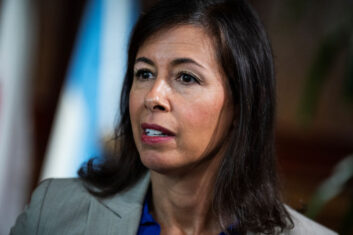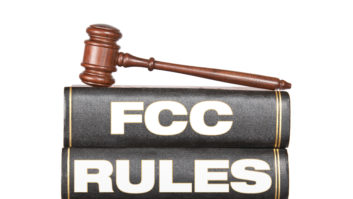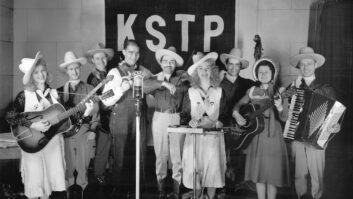
The long-delayed FCC review of broadcast ownership rules for 2018 finally is in the books. The commission is keeping in place its local ownership limits and caps for radio broadcasters. It also has turned aside broadcaster arguments seeking more deregulation and a different approach to conducting these quadrennial reviews.
The FCC voted 3–2 along party lines to complete the review on the Friday before Christmas, complying with a court-ordered deadline. The commission wrote, “The record of this proceeding demonstrates that while the media industry has experienced both unforeseen challenges and substantial changes since the last quadrennial review, broadcasters retain a uniquely important role serving the American public in their local communities.”
Three ownership rules are subject to review every four years under a mandate from Congress.
They are the local radio ownership rule, which limits common ownership of multiple stations in a market; the local television ownership rule; and the dual television network rule.
In a statement, Chairwoman Jessica Rosenworcel wrote: “With respect to radio, (the completed review) clarifies our approach to subcaps and the contour-overlap methodology used to assess stations.”
In each of the largest radio markets, a licensee can own up to eight commercial radio stations, but a subcap limits a licensee to owning no more than five on each band (FM/AM) in the market. The cap shrinks as market size decreases.
The commission now has retained this rule. “After considering the conflicting arguments in the record, and the split that exists even within the radio industry, we agree with those commenters asserting that loosening the rule would harm competition to the detriment of listeners.”
It adopted only a minor modification, making permanent an interim contour-overlap methodology that has been used for the past 20 years to determine ownership limits in areas outside Nielsen Audio Metro markets and in Puerto Rico.
(For the TV side of its 2018 review, the FCC has retained the Dual Network Rule, which effectively prohibits a merger between the Big Four broadcast networks. It kept the Local Television Ownership Rule “with modest adjustments” to reflect changes in the television marketplace. It updated the methodology for determining station ranking in a market, and expanded the prohibition on use of affiliation to circumvent the restriction on acquiring a second top-four ranked station in a market.)
The 2018 process had been delayed by, or took place against the backdrop of, numerous factors including litigation over earlier rulings, a Supreme Court case, the pandemic, a second comment period and the lack of a majority on the commission. When the process still hadn’t been finished by early 2023, the NAB accused the FCC of a “perpetual slow-roll.” In September, responding to a plea from the NAB, a federal appeals court gave the FCC 90 days to complete the review.
The review for 2022 is currently underway. The FCC took public comments for its 2022 process last winter. The NAB described that as a waste of time under the circumstances.
A Radio World email to a representative of the National Association of Broadcasters seeking comment about the 2018 outcome was not immediately returned.
[Read the text of the FCC’s order. Commissioner statements are at the end.]
Status quo extended
The NAB had asked the FCC either to repeal the radio rule entirely, or abolish AM radio ownership caps while raising FM limits in big markets and eliminating them in smaller ones.
iHeartMedia had proposed eliminating ownership limits on AM stations while retaining the restrictions on FMs. Some broadcasters, including Townsquare Media and Midwest Communications, sought further relaxation to allow broadcasters to “create greater scale” to compete with digital media companies.
But deregulatory proposals were not convincing to the new Democratic majority on the commission. It decided the radio limits remain necessary to promote the commission’s public interest goals of competition, localism and viewpoint diversity.
“Ultimately, we find that allowing one entity to own more radio stations in a market than currently permitted would harm competition without achieving the benefit sought by some of enabling station owners to compete more effectively with social media companies and national advertising platforms like Google and Facebook,” the FCC stated, calling the rule a backstop against further “excessive” consolidation.
“[W]e continue to find that there is ample leeway under the current rule for additional consolidation within limits. What the current rule does constrain, however, is the further aggregation of market share by an already dominant firm in a local market.”
The FCC’s “market definition” remains unchanged after the 2018 review.
“We continue to find that the relevant market to consider for purposes of the Local Radio Ownership Rule is the radio listening market. It would not be appropriate to include satellite or non-broadcast audio sources, such as internet streaming services, in that market at this time.”
Broadcasters have been arguing for years that this policy is badly outdated and detrimental to both broadcasters and their listeners. But the FCC stated: “[A]lthough the broader marketplace for the delivery of audio programming includes satellite and online audio sources, along with traditional broadcast radio, there are significant differences in the availability, reach, consumer engagement and cost of these services, such that they deliver different value propositions to consumers. Significantly, of the various options available in the broader audio marketplace, generally speaking, only terrestrial broadcast radio both is available without a paid subscription and does not require access to internet service.”
Ultimately, the FCC wrote, “we agree with iHeart that ‘competitive pressures across platforms within the audio ecosystem are not determinative of what is the relevant market’ for purposes of our Local Radio Ownership Rule. We reject NAB’s suggestion that the relevant competition is for ‘the public’s attention and time.’”
The FCC also declined to change the framework it uses to review broadcast ownership rules “to determine if they remain necessary in service of our three traditional policy goals: competition, localism and viewpoint diversity.” It rejected arguments that it should reinterpret the statute as requiring it to base reviews only on competitive factors.
It also declined NAB’s suggestion that it should reinterpret the relevant section of the Telecom Act as giving a presumption in favor of deregulation. This would have represented a fundamental change. NAB had argued for an assumption that the FCC be limited to repealing or relaxing existing rules.
“We disagree with the assertion that section 202(h) only allows for the repeal or relaxation of a rule,” the FCC wrote. “Rather, as we have concluded in prior quadrennial reviews and the courts have upheld, we find that the commission may make [the rules] more or less stringent after reviewing and considering the state of competition in the media marketplace.”
In opposition
The dissenting votes came from the FCC’s Republicans.
Commissioner Brendan Carr wrote that “despite a record bursting with evidence of a vibrant media marketplace, the commission continues to advance the fiction that broadcast radio and broadcast television stations exist in markets unto themselves.”
He said the FCC’s “backwards-looking policies” have caused harm.
“During a visit to Powell, Wyo., a town of about 6,000 people that sits in the northwest corner of the Cowboy State, I stopped by a local radio station, only to find its doors locked,” Carr wrote.
“After we were finally able to rouse someone to let us inside, I got a good look at the operations — effectively a Dell laptop playing music pumped in from some big city somewhere else. A couple of miles away in Cody, there was a local broadcast company that was investing in their community and the types of local news and entertainment programming that are attuned to the needs of their listeners.”
He said the company wanted to invest in the Powell station and originate live and local programming for an underserved community but was blocked by the FCC’s caps.
His fellow Republican Nathan Simington supports eliminating or loosening the Local Radio Ownership Rule. He wrote that “the factual record regarding the competitive environment in the audio marketplace clearly supports that conclusion.”
He continued: “The commission here, in the name of public interest, viewpoint diversity and competition, valiantly relies on the national industry incumbent — whose commercial dominance in the radio marketplace would be hurt by elimination of the rule — to make its arguments for it,” apparently a reference to iHeartMedia’s opposition to eliminating FM caps.







